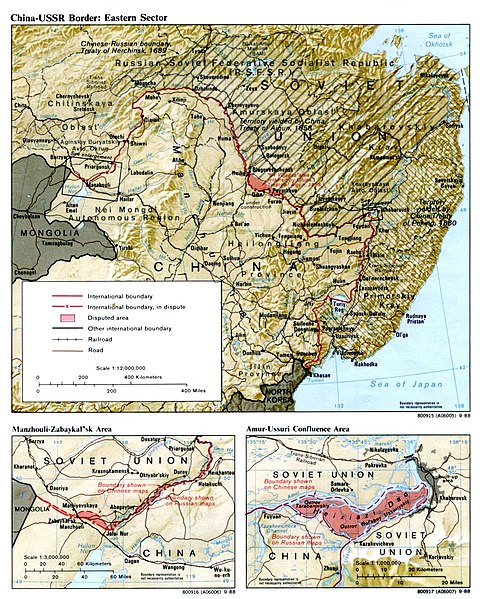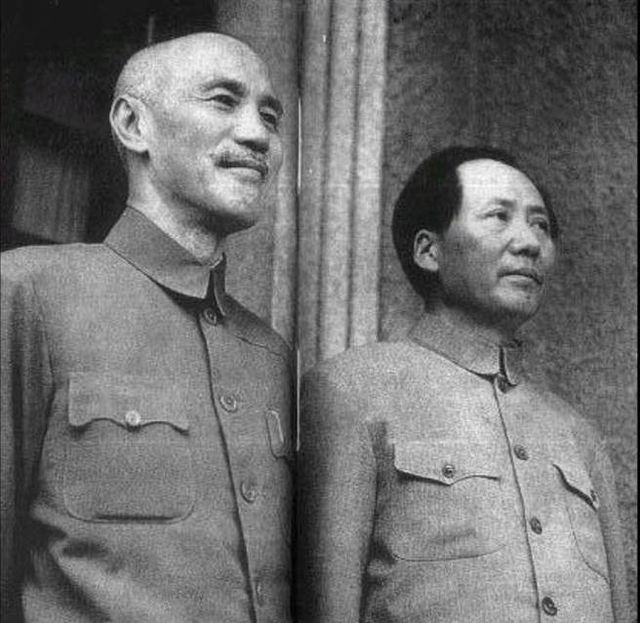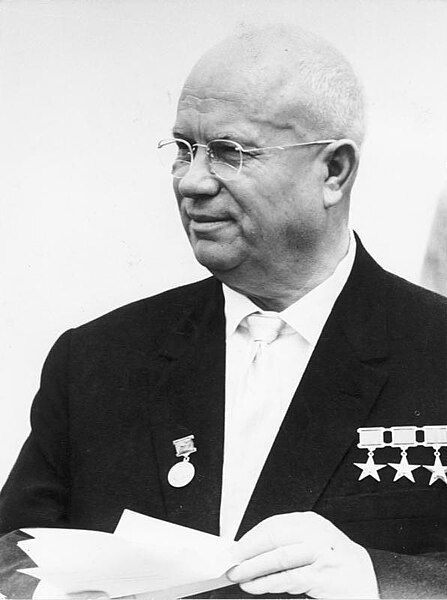Sino-Soviet border conflict
The Sino-Soviet border conflict was a seven-month undeclared military conflict between the Soviet Union and China in 1969, following the Sino-Soviet split. The most serious border clash, which brought the world's two largest communist states to the brink of war, occurred near Damansky (Zhenbao) Island on the Ussuri (Wusuli) River in Manchuria. Clashes also took place in Xinjiang.
Disputed areas in the Argun and Amur rivers. Damansky/Zhenbao is to the south-east, north of the lake.
Zhenbao (Damansky) Island
A Soviet ship using a water cannon against a Chinese fisherman on the Ussuri River, 6 May 1969
The Soviet T-62 tank that was captured by the Chinese during the 1969 clash is now on display at the Military Museum of the Chinese People's Revolution.
The Sino-Soviet split was the gradual deterioration of relations between the People's Republic of China (PRC) and the Union of Soviet Socialist Republics (USSR) during the Cold War. This was primarily caused by doctrinal divergences that arose from their different interpretations and practical applications of Marxism–Leninism, as influenced by their respective geopolitics during the Cold War of 1947–1991. In the late 1950s and early 1960s, Sino-Soviet debates about the interpretation of orthodox Marxism became specific disputes about the Soviet Union's policies of national de-Stalinization and international peaceful coexistence with the Western Bloc, which Chinese leader Mao Zedong decried as revisionism. Against that ideological background, China took a belligerent stance towards the Western world, and publicly rejected the Soviet Union's policy of peaceful coexistence between the Western Bloc and Eastern Bloc. In addition, Beijing resented the Soviet Union's growing ties with India due to factors such as the Sino-Indian border dispute, and Moscow feared that Mao was too nonchalant about the horrors of nuclear warfare.

Mao Zedong (left) and Nikita Khrushchev (right) in Beijing, 1958
In the Asian theatre of World War II, Chiang Kai-shek of the KMT was kidnapped by one of his own officers and forced to ally with the Communist Mao Zedong of the CCP as reluctant co-belligerents to expel Imperial Japan from China.
Chairman Mao with US journalist Anna Louise Strong, whose work presented and explained the Chinese Communist revolution to the Western world. (1967)
The Sino-Soviet split arose from the ideological clash between Soviet first secretary Khrushchev's policies of De-Stalinisation and peaceful coexistence and Mao Zedong's bellicose and Stalinist policies.








